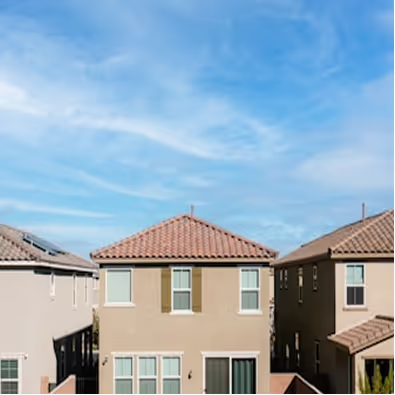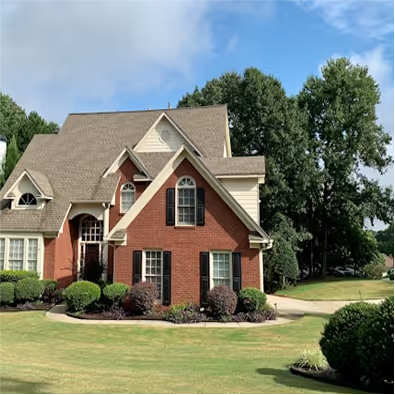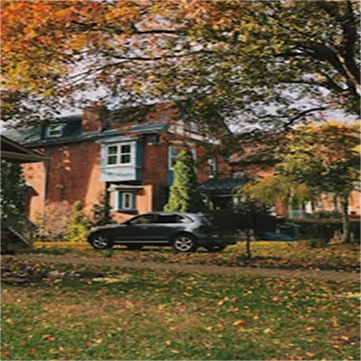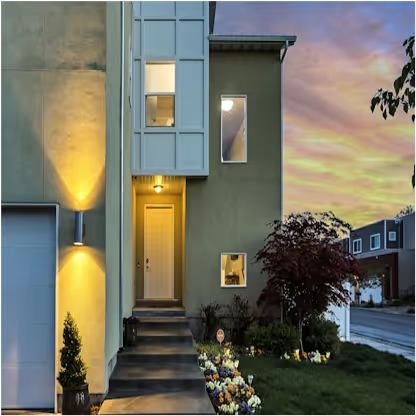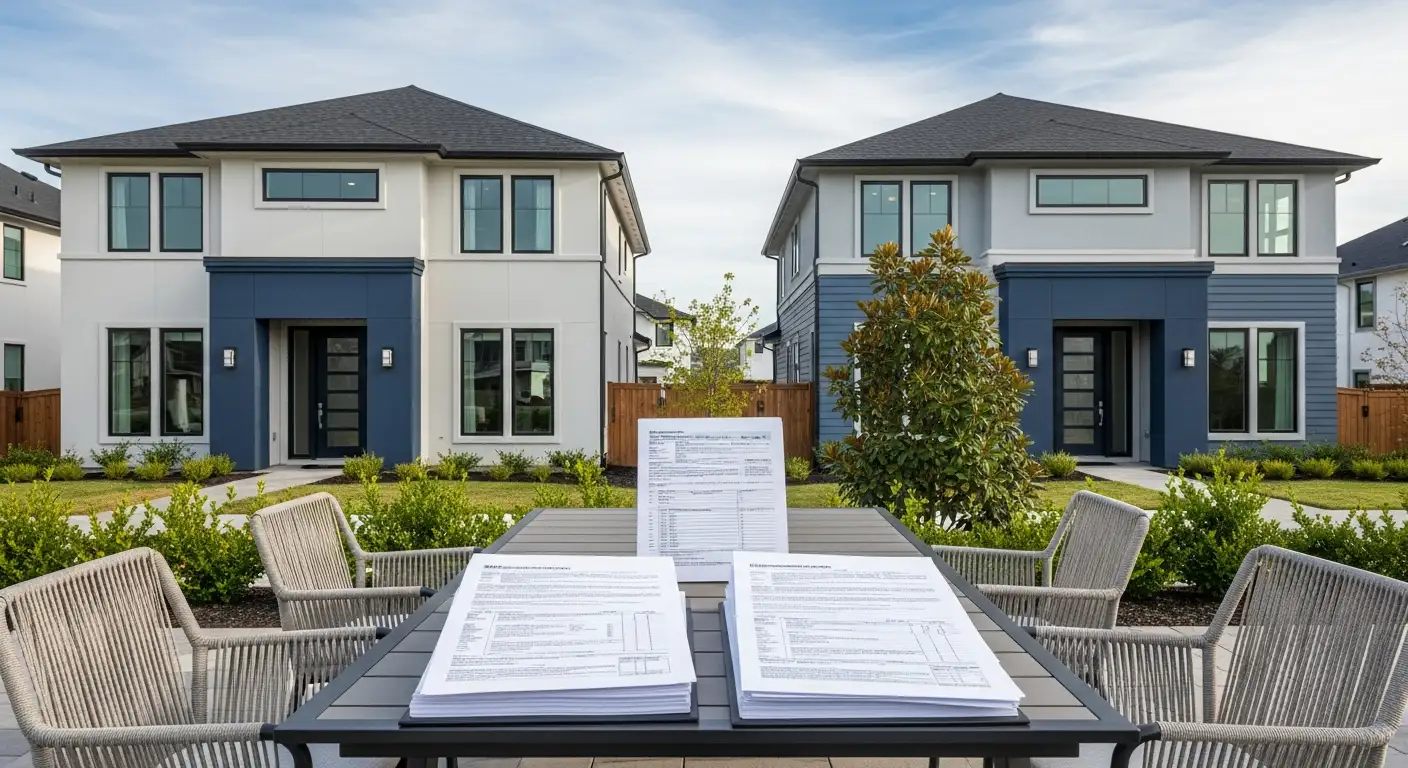Understanding Construction-to-Permanent Loans
Construction-to-permanent loans offer a simplified, efficient approach to financing a new home build. Combining construction funding and a mortgage into one seamless loan, these instruments eliminate the need for multiple closings and reduce costs, providing borrowers with financial predictability and convenience throughout the construction and homeownership journey.
What Is a Construction-to-Permanent Loan?
Definition and Overview
A construction-to-permanent loan is a financing option that covers the cost of building a home and then converts into a traditional mortgage once construction is complete. This type of loan simplifies the borrowing process by combining construction financing and permanent mortgage into a single loan with one closing. Common loan terms for the permanent phase range from 15 to 30 years, typically featuring fixed interest rates.
How Construction-to-Permanent Loans Work
Funds from a construction-to-permanent loan are disbursed in phases known as "draws," which correspond to construction milestones verified through inspections. During the construction period, borrowers typically make interest-only payments based on the funds already disbursed. Once the build is finished and passes final inspections, the loan automatically transitions into a conventional mortgage. This streamlined process reduces closing costs, avoids the need for two separate loans, and helps lock in a fixed interest rate early on.
Difference Between Construction-Only and Construction-to-Permanent Loans
Unlike construction-only loans, which are short-term and require borrowers to pay off the loan or obtain a separate mortgage after construction (usually within 12 to 18 months), construction-to-permanent loans combine these steps into one seamless process. Construction-only loans often have variable interest rates and require two closings, while construction-to-permanent loans feature one closing, fixed rates, and a direct conversion into a long-term mortgage, making them more convenient and cost-effective for many borrowers.
The Advantages of Choosing a Construction-to-Permanent Loan
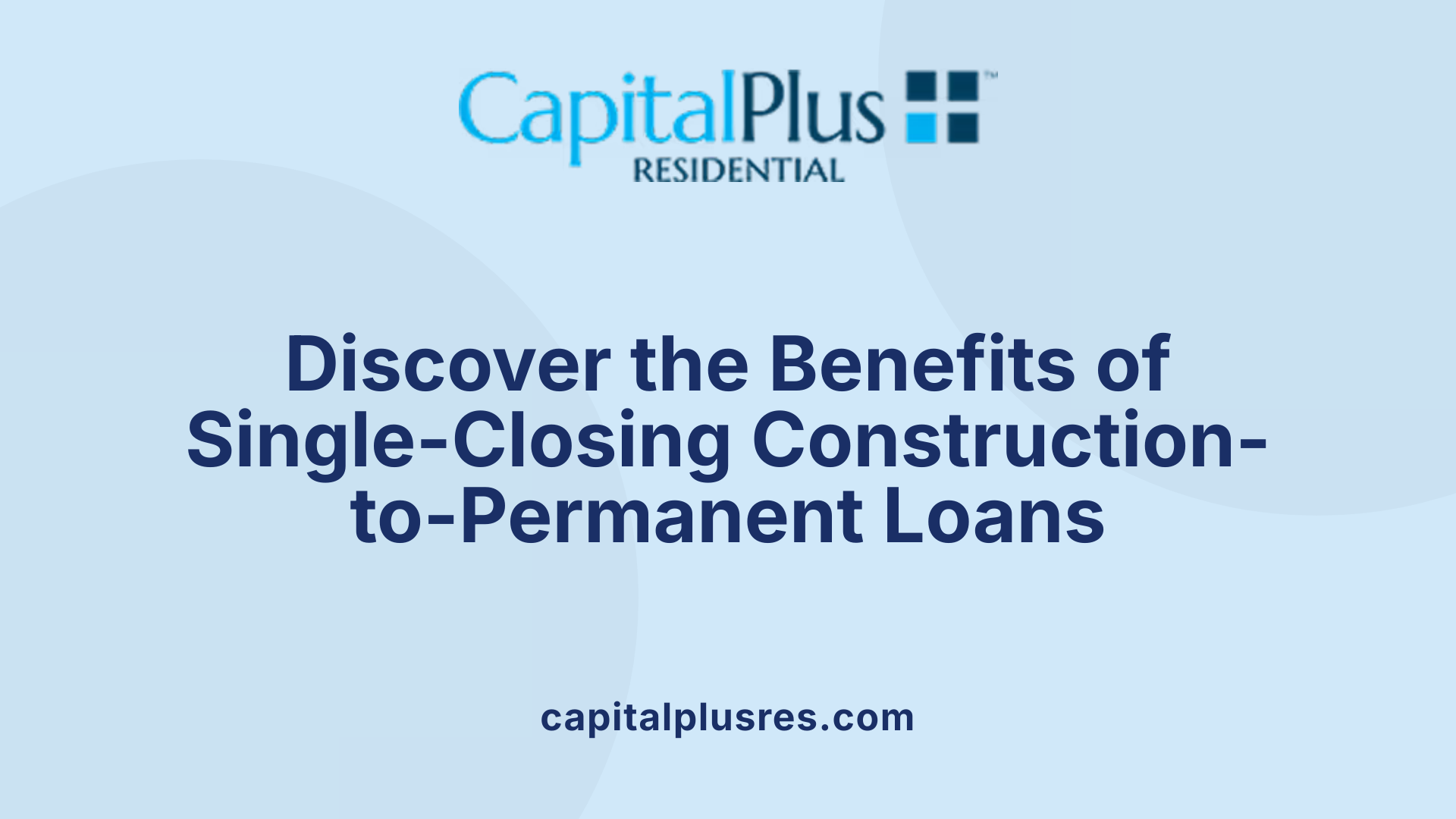
Single Closing Cost Benefit
A significant advantage of construction-to-permanent loans is that they require only one closing cost. Unlike traditional construction and mortgage loans that require two separate closings, this streamlined process saves both time and money for the borrower.
Interest-Only Payments During Construction
During the construction phase, borrowers usually make only interest-only payments based on the funds disbursed to the builder. This eases the monthly budget as principal payments are deferred until after construction is complete.
Fixed Interest Rates Throughout the Loan Term
These loans typically lock in a fixed interest rate at closing, maintaining payment predictability throughout both the construction and permanent mortgage phases. This fixed rate protects borrowers from potential fluctuations in interest rates during construction.
Lower Closing Costs Compared to Separate Loans
Because construction-to-permanent loans combine financing into a single transaction, they reduce closing costs compared to taking out individual construction and mortgage loans. This can result in significant cost savings, especially for borrowers financing up to $2 million.
Loan Terms and Flexibility
Loan terms commonly range from 15 to 30 years, aligning with traditional mortgages. The construction phase usually lasts about 12 to 18 months, with draw schedules tied to construction milestones to ensure funds are released as work progresses. Many lenders also offer extensions for unforeseen delays, providing flexibility during the build process.
Qualification and Eligibility Criteria for Borrowers

What Are the Credit Score Requirements?
To qualify for a construction-to-permanent loan, lenders generally require a minimum credit score of around 680. Borrowers with higher credit scores often enjoy better loan terms and higher approval chances.
What Down Payment Is Typically Required?
These loans usually demand a substantial down payment of at least 20%, which can sometimes rise to 30%. The exact percentage depends on factors such as the borrower’s creditworthiness and the specifics of the construction project.
How Does Debt-to-Income Ratio Affect Eligibility?
Lenders prefer a debt-to-income (DTI) ratio below 45%, with many targeting 43% or lower. Maintaining a lower DTI signals better financial stability, improving eligibility.
What Income and Employment Verification Is Needed?
Applicants must demonstrate stable income and employment history. This typically involves providing documentation such as pay stubs, tax returns, and employment verification to prove the ability to repay the loan.
How Are Builder and Construction Plans Approved?
Lenders require approval of the builder, who must be licensed, as well as detailed construction plans. Blueprints and cost estimates must be submitted for review to ensure the project meets lender standards and complies with regulations.
Understanding the Loan Disbursement Process During Construction
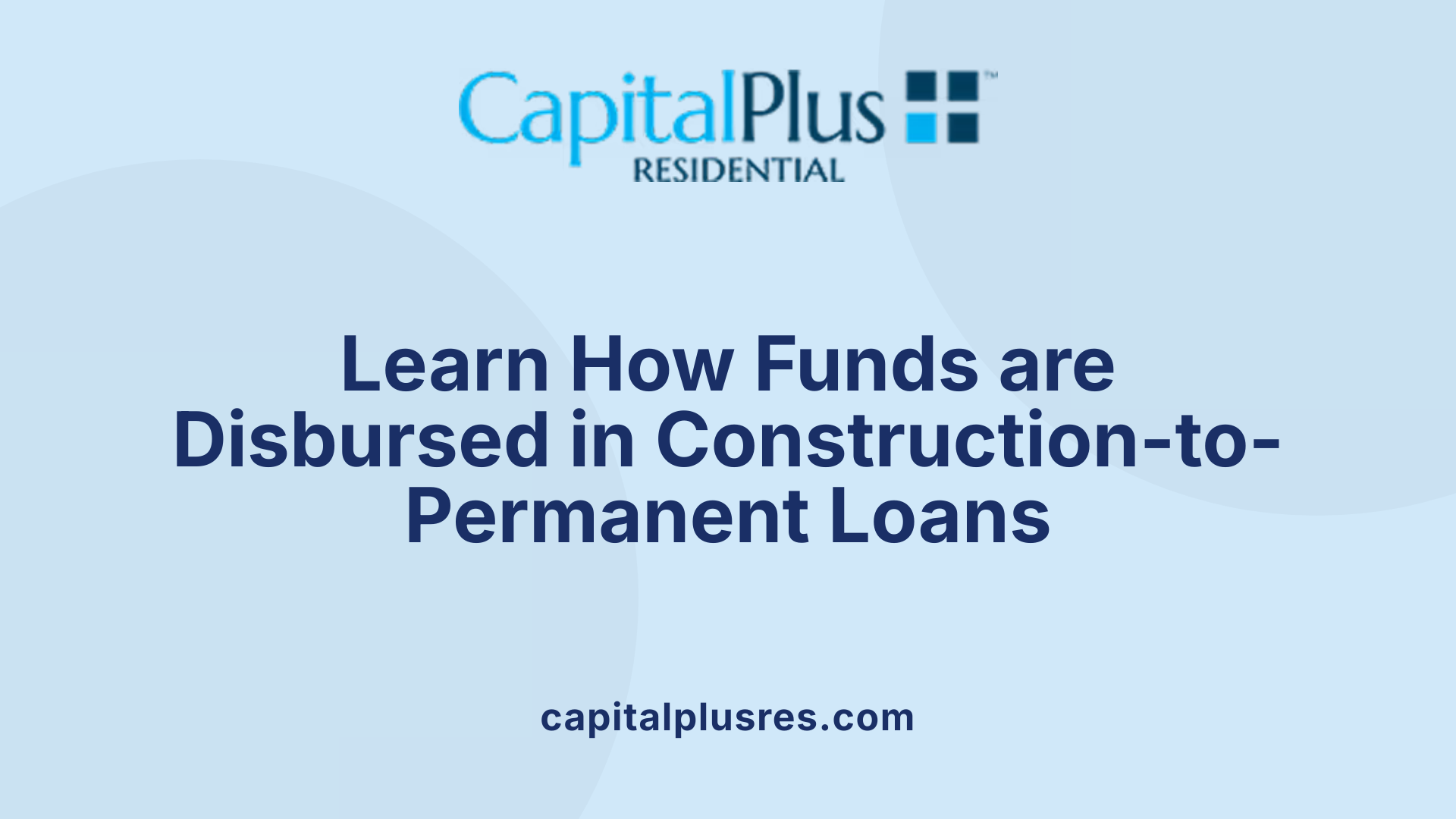
How are draws scheduled and inspections conducted during construction?
Construction-to-permanent loans use a draw schedule to release funds in phases aligned with project milestones. Before each draw, the lender typically requires an inspection to verify that the specified portion of work is complete. These scheduled draws ensure that money is disbursed only as progress is made, protecting both borrower and lender.
What payments are required during the construction phase?
During construction, borrowers usually make interest-only payments based on the amount already disbursed through draws. This approach helps borrowers manage cash flow, as full mortgage payments begin only after the home is complete and the loan converts to a permanent mortgage.
How are loan funds managed throughout construction?
Loan funds cover all construction-related expenses including land, materials, labor, and permits. Funds are released incrementally—known as draws—following inspections at key construction milestones. This phased release helps keep the project on budget and ensures that funds are used appropriately.
How are cost overruns and budget adjustments handled?
Draw amounts can sometimes be adjusted if the project is under budget, allowing borrowers to reduce loan draws accordingly. However, if costs exceed estimates, lenders generally do not increase the loan amount beyond the approved budget, which means borrowers are responsible for covering any overruns. This setup encourages careful planning and budget management.
Overall, the structured disbursement tied to inspections, combined with interest-only payments and prudent oversight of funds, makes the loan management process manageable and transparent during home construction.
The Transition: From Construction to Permanent Mortgage

How does the conversion from construction loan to permanent mortgage work?
A construction-to-permanent loan begins as financing used solely for construction costs, with funds drawn in phases as work progresses. Once construction is complete, the loan converts into a traditional mortgage, eliminating the need for a separate loan closing. This conversion typically happens after final inspections and appraisals confirm the finished home meets lender and regulatory standards.
What inspections and appraisals are required at conversion?
Before conversion, scheduled inspections ensure the home’s construction complies with approved plans and local building codes. Afterward, a thorough appraisal is performed to assess the property's market value. Final approval depends on these verifications, including receiving a certificate of occupancy that verifies the home is ready for permanent habitation.
What documentation is necessary for the conversion?
Borrowers must provide updated and accurate documentation reflecting the completed project. This typically includes the builder’s final lien waivers, completed construction contracts, updated financial statements, and a finalized loan agreement consistent with underwriting submissions. If any documents are outdated or if additional funds are requested at conversion, further documentation may be required by the lender.
What are the typical loan terms after conversion?
Following conversion, borrowers enter into a permanent mortgage agreement, usually spanning 15 to 30 years. These terms are similar to traditional mortgage loans, featuring fixed interest rates that were locked in at the initial closing. This ensures predictable monthly payments and long-term financial planning.
How does interest rate locking affect the loan?
One significant advantage of construction-to-permanent loans is locking in the interest rate at closing. This fixed rate remains unchanged throughout both the construction and permanent phases, protecting borrowers from rate fluctuations that are common with construction-only loans. This stability aids budgeting and eliminates uncertainty about future payment amounts during the life of the loan.
Potential Drawbacks and Challenges of Construction-to-Permanent Loans
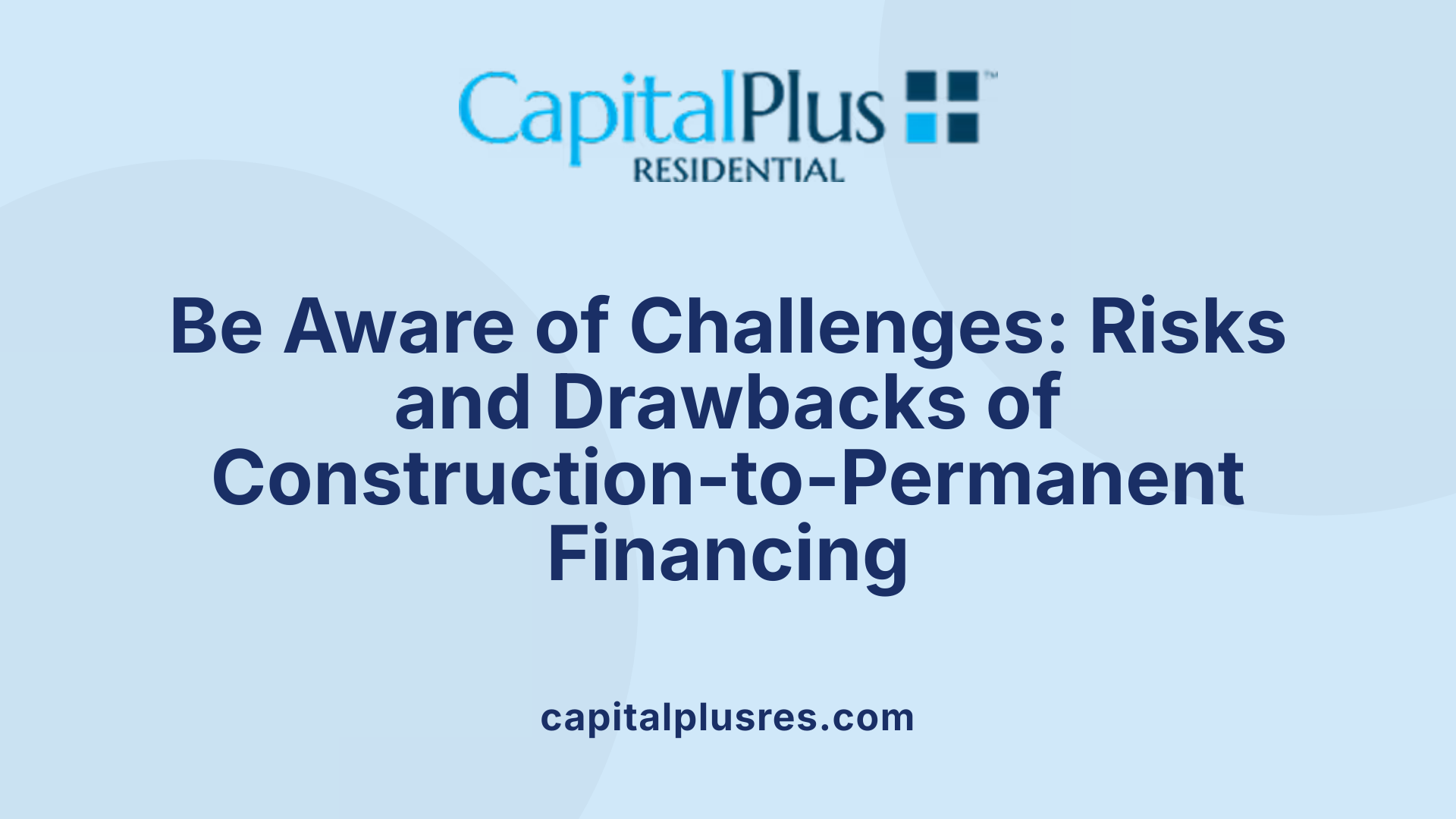
Higher down payments
One notable challenge with construction-to-permanent loans is the requirement for a larger down payment. Borrowers typically need to provide at least 20%, and in some cases, this can rise to 30% depending on creditworthiness and lender policies. This upfront cost can be a significant barrier, especially for first-time homebuilders.
Possibility of cost overruns and delays
Construction projects often encounter unforeseen expenses and time extensions. Cost overruns are a genuine risk because lenders usually don't allow additional draws beyond the approved budget. Delays in construction can push the timeline beyond the typical 12 to 18 months building window, potentially requiring expensive extensions and complicating loan terms.
Potentially higher interest rates than separate loans
Compared to obtaining separate loans for construction and the permanent mortgage, construction-to-permanent loans often carry higher interest rates. While they offer the convenience of a single close and fixed rates post-construction, the construction phase interest rates tend to be elevated to offset the lender's higher risk.
Increased documentation and approval requirements
Borrowers must prepare for a more rigorous qualification process. Documentation requirements extend beyond typical mortgages and include detailed construction plans, builder licensing verification, and permits. Lenders also scrutinize credit scores (generally a minimum of 680), debt-to-income ratios, and borrowers’ financial stability more intensely.
Risks during construction phase
During the construction period, only interest payments are required, but because funds are disbursed in stages via scheduled draws contingent on inspections, any issues on-site can delay these payments to builders. Additionally, if the borrower faces financial difficulties during this phase, it can threaten the completion of the project and complicate conversion to the permanent mortgage.
Understanding these potential drawbacks helps borrowers weigh the benefits alongside the challenges when considering a construction-to-permanent loan for their homebuilding needs.
Comparing Construction-to-Permanent Loans with Other Financing Options
What are standalone construction loans?
Standalone construction loans are short-term loans specifically for the building phase of a home. Unlike construction-to-permanent loans, they do not automatically convert into a mortgage once construction finishes. Borrowers typically make interest-only payments during construction, but after completion, they must secure a separate mortgage loan to pay off the construction loan. This two-step process means two closings and potentially higher overall costs, but it can offer flexibility for borrowers with sufficient savings to cover mortgage payments during the construction phase.
How do renovation and remodel loans differ?
Renovation and remodel loans are designed to finance updates or expansions to existing properties rather than new construction. These loans are based on the property's post-renovation value and often come with shorter terms and higher interest rates compared to construction-to-permanent loans. Unlike construction-to-permanent financing, which finances new homes, renovation loans focus on improving or increasing the value of current residences.
What are FHA and VA loan alternatives?
FHA and VA loans provide options for eligible borrowers to finance construction or renovation with government-backed programs. FHA construction-to-permanent loans, for example, allow for a single loan that converts after building, often with lower down payment requirements than traditional loans. VA loans may offer construction financing benefits for qualified veterans. These alternatives can provide more accessible entry points but may include specific eligibility rules and insurance costs.
How do HELOC and cash-out refinance options work?
Home Equity Lines of Credit (HELOCs) and cash-out refinance loans use the borrower's existing home equity to fund home improvements or construction projects. HELOCs provide revolving credit up to a limit, offering flexibility in borrowing and repayment but typically require an existing home with sufficient equity. Cash-out refinances replace an existing mortgage with a larger one, providing upfront cash for construction or remodeling costs. These options are generally suitable for homeowners rather than new construction projects and might not offer the same conveniences as construction-to-permanent loans.
| Financing Type | Description | Pros | Cons |
|---|---|---|---|
| Construction-to-Permanent | Single loan covering construction, converts to mortgage | Single closing, fixed rates, interest-only payments during construction | Higher down payments, rigorous approval |
| Standalone Construction | Short-term loan for building only; requires separate mortgage | Flexible, may accommodate unique project needs | Two closings, more costly |
| Renovation/Remodel Loans | Loans based on post-renovation property value | Funds home improvements, shorter terms | Higher interest rates, less suitable for new builds |
| FHA and VA Loans | Government-backed options for eligible borrowers | Lower down payments, possibly easier qualification | Specific eligibility criteria, insurance fees |
| HELOC/Cash-Out Refinance | Use existing home equity to fund projects | Flexible borrowing, potential tax benefits | Requires existing equity, variable rates |
Special Considerations: Loan Amounts, Property Types, and Unique Scenarios
Loan Limits and Jumbo Loans
Construction-to-permanent loans can finance amounts up to $2 million, accommodating most residential construction projects. Some lenders offer jumbo loans for amounts exceeding standard conforming limits, such as loans greater than $806,500, tailored for high-cost properties.
What Is Included in the Financing?
These loans cover comprehensive construction-related expenses, including land acquisition, building materials, labor costs, and necessary permits. This all-in-one financing approach simplifies budgeting by consolidating costs under a single mortgage.
Are Manufactured Homes and Condos Eligible?
Certain manufactured homes qualify for construction-to-permanent financing, especially when the purchase includes the lot, site preparation, and related structures like porches and garages. For condominiums, only detached condo units are eligible, according to Fannie Mae guidelines, ensuring specific property types meet the program's criteria.
What Are the Building Period Limits?
The construction phase for these loans typically spans 12 to 18 months, with most lenders capping it at about one year. Extensions may be granted if delays occur but must adhere to lender policies to maintain loan eligibility.
How Do Fannie Mae Guidelines Impact Loan Structure?
Fannie Mae supports both single-closing and two-closing transactions for construction-to-permanent loans. Single-closing loans streamline the process with one closing that converts from construction to permanent financing after project completion. Two-closing transactions separate the construction loan and permanent mortgage, often requiring separate approvals and documentation. Fannie Mae mandates that loan terms remain consistent throughout all documentation and underwriting submissions to ensure smooth conversion.
These special considerations help borrowers navigate eligibility, financing scope, and loan structuring to optimally finance their home construction projects.
Navigating the Application Process: Tips for Prospective Borrowers
What does the preapproval process involve?
Before applying for a construction-to-permanent loan, borrowers should seek preapproval to understand their budget and loan eligibility. During preapproval, lenders review credit scores (usually 680 or higher), income, employment history, debt-to-income ratio (typically below 45%), and assets. This step sets realistic expectations and streamlines later stages.
How do you choose builders and architects?
Selecting a licensed builder and experienced architect is crucial. Lenders require approved construction plans and contracts with licensed builders to ensure project feasibility. Research builder reputations, review portfolios, and verify licenses. Collaborating closely with your architect ensures designs meet lender and municipal requirements, avoiding delays.
How to compare lender offerings and rates?
Compare loan terms, interest rates (typically fixed for the permanent phase), down payment requirements (generally 20% or more), and closing costs. Look for lenders offering flexible draw schedules aligned with construction milestones. Some may offer rate locks during construction. Consider loan caps, such as financing up to $2 million, and available jumbo loan options.
What insurance and contractual requirements should be expected?
Lenders often require additional insurance, such as builder’s risk insurance, to protect against construction-related risks. Contracts should clearly outline payment schedules tied to draw inspections and address cost overruns. Be prepared to provide detailed building plans, permits, and proof of land ownership.
How to prepare for qualification and documentation?
Gather comprehensive financial documents: tax returns, pay stubs, bank statements, and proof of down payment funds. Submit builder contracts, blueprints, and permits early. Maintain communication with your lender for any updated documentation at conversion to the permanent loan, especially if construction timelines change or additional funds are needed.
Through diligent preparation and understanding these application steps, prospective borrowers can navigate the construction-to-permanent loan process with confidence and streamline their path to a new home.
Making an Informed Decision on Construction-to-Permanent Loans
Construction-to-permanent loans stand out as a compelling financing option for those building their dream homes, offering streamlined processes, single closing convenience, and fixed-rate security. While the path involves rigorous qualification standards and the need for careful planning to avoid cost overruns, the benefits often outweigh the challenges, especially for borrowers seeking predictability and simplicity in construction financing. Understanding the various facets of these loans—from qualification through the final mortgage conversion—empowers potential homeowners to make informed, confident financial decisions on their journey to new homeownership.
References
Latest Blog


Get Pre-Approved Today
Start your secure online application now so you can get pre-approved for a mortgage (and close on your dream home) quickly within 5 minutes.

